This post may contain affiliate links. Please read our disclosure policy.
These small batch molasses cookies have crisp edges, soft centers, and the bold flavor of molasses with warm spices. This easy recipe makes just a few cookies, perfect when you want a homemade treat without extras.
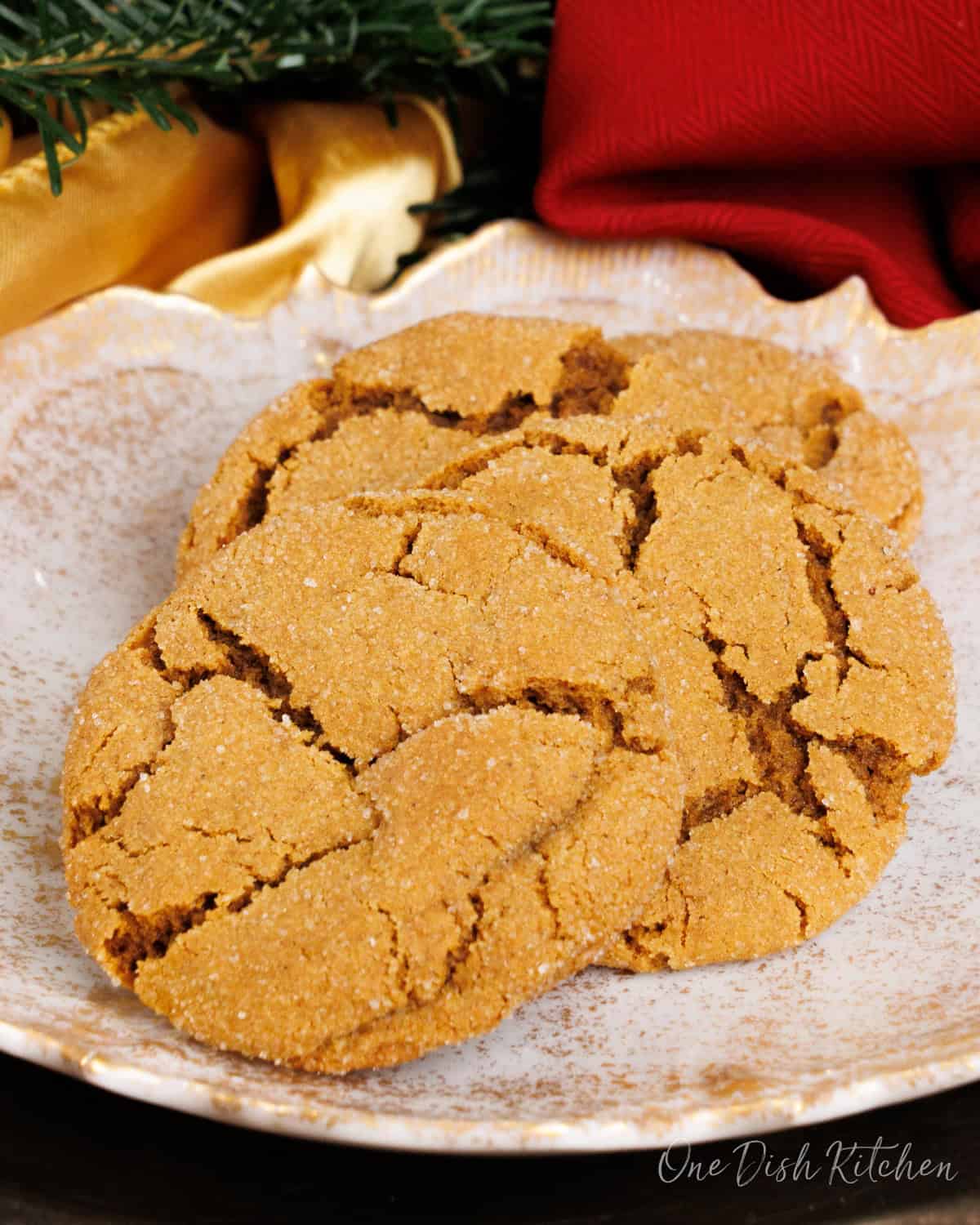
Featured Comment
“The BEST Molasses Cookies!!”
– Kelly
Why You’ll Love This Recipe
- Soft & Chewy Texture: Crisp edges with soft, tender centers and that signature crinkled top.
- Rich Molasses Flavor: Deep, old-fashioned sweetness in every bite.
- Small Batch Recipe: Yields just enough for one or two without leftovers.
- Warm Baking Spices: Ginger, cinnamon, and cloves for a classic holiday aroma.
Molasses cookies have always been a favorite of mine, with their deep, old-fashioned flavor and warm, spiced aroma filling my kitchen. I love their soft, chewy centers, crisp edges, and crinkled tops.
This small batch recipe gives me all the classic flavor I want without making more than I need, perfect for the holidays or any time I’m craving a nostalgic, homemade treat.
Looking for more easy small batch cookie recipes? Try my small batch ginger cookies, buttery shortbread bites, or a brookie for one.

Ingredients
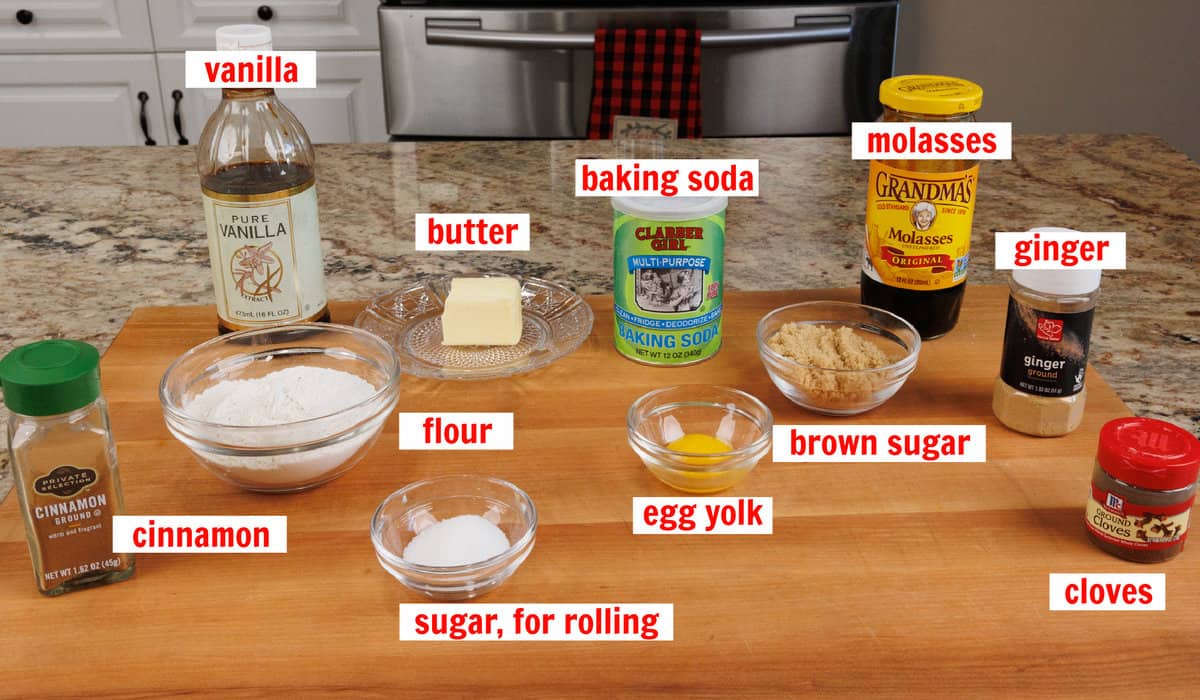
If you have any ingredients leftover from this small batch molasses cookie recipe, check out our Leftover Ingredients Recipe Finder.
- Butter: Use softened butter (salted or unsalted). It should feel soft but cool to the touch. Softened butter creams easily with sugar for light, tender cookies.
- Brown Sugar & Molasses: These create the rich, chewy texture and deep flavor. Out of brown sugar? Make your own with our small batch brown sugar recipe. Leftover molasses? Try it in our mini gingerbread loaf or even in a single sloppy joe.
Tip: Use dark molasses for the best flavor and texture. It adds rich, robust sweetness and helps keep the cookies soft and chewy. Avoid blackstrap molasses, it’s much more bitter and can overwhelm the cookies. Popular brands like Grandma’s or Brer Rabbit work well. In the UK, black treacle or light treacle are common substitutes.
- Egg Yolk: Just one large egg yolk is needed. Save the white for one of our egg white recipes, like small batch meringue cookies or mini Texas sheet cake.
- Flour: Use all-purpose flour. For gluten-free cookies, King Arthur Gluten Free Measure For Measure Flour works well.
See recipe card below for a full list of ingredients and measurements.
What is Molasses?
Molasses is a thick, dark syrup made during the sugar-making process. It gives brown sugar its signature flavor and color. There are three main types:
- Light Molasses: From the first boiling, it’s sweet and mild.
- Dark Molasses: From the second boiling, it’s thicker, richer, and less sweet and perfect for baking cookies.
- Blackstrap Molasses: Made from a third boiling, it’s very dark, low in sugar, and has a strong, bitter flavor. Best avoided in most baked goods.
Recipe Variations
Customize your molasses cookies with these easy flavor additions:
- Chocolate Drizzle: Drizzle melted chocolate over cooled cookies for a sweet finish.
- Chocolate Molasses: Stir in 2 tablespoons of finely chopped bittersweet chocolate for added richness.
- Orange Zest: Mix 1 teaspoon of orange zest into the dough. For more flavor, add 1/4 teaspoon zest to the rolling sugar.
- Raisin: Add a few tablespoons of raisins for extra chew and natural sweetness.
- Cardamom Spice: Add a pinch of ground cardamom for a warm, aromatic note.
How To Make Molasses Cookies
These photos and instructions are here to help you visualize how to make a small batch of molasses cookies. See the recipe box below for ingredient amounts and full recipe instructions.
- Cream the Butter and Sugar: In a medium bowl, beat the softened butter and brown sugar with an electric mixer on medium speed for about 1 minute, until well combined.
Tip: Creaming adds air to the dough, helping the cookies bake up light and tender. Make sure the butter is soft, not melted.
- Add Wet Ingredients: Mix in the egg yolk, molasses, and vanilla until fully blended.
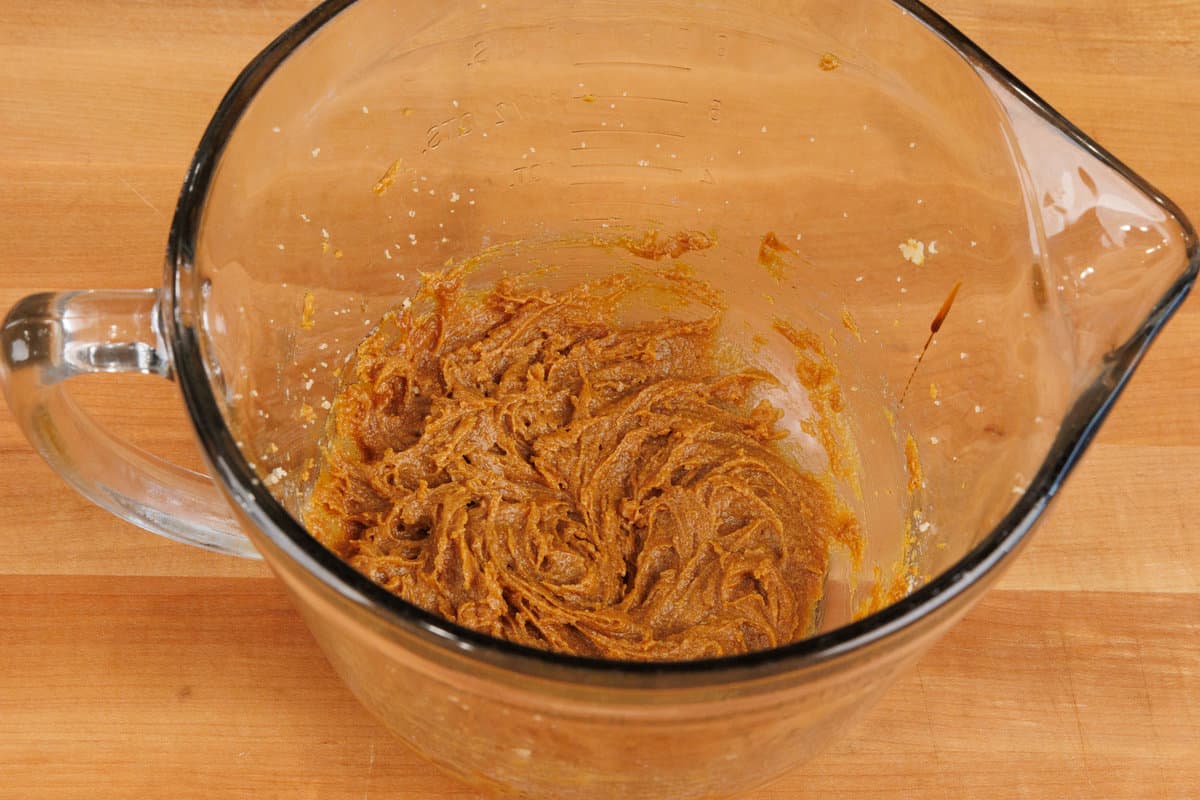
- Combine Dry Ingredients: In a separate small bowl, whisk together the flour, ginger, cinnamon, baking soda, and cloves.
- Make the Dough: Gradually add the dry ingredients to the wet mixture, beating on low speed until a dough forms.
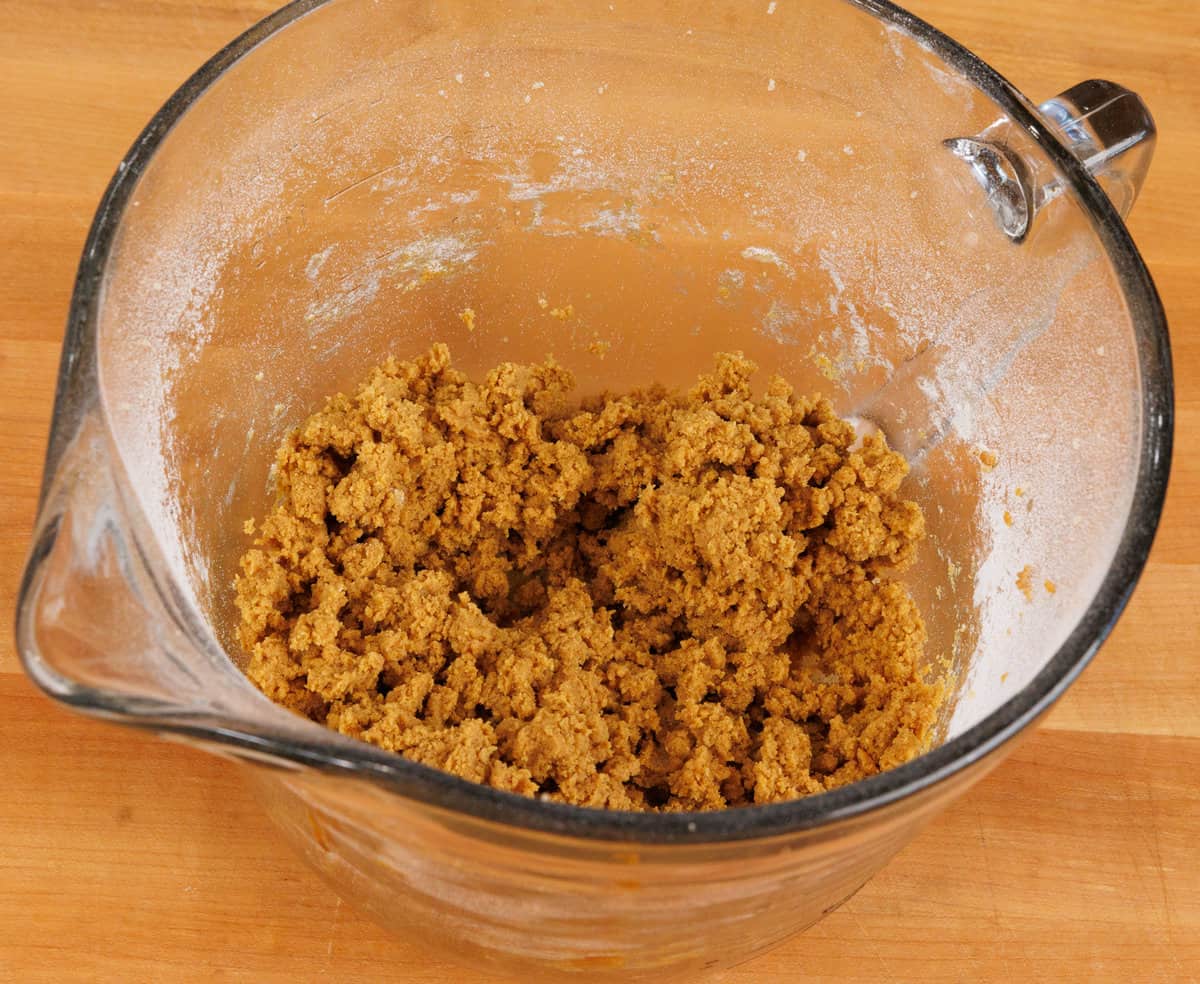
- Chill the Dough: Wrap the dough in plastic wrap and refrigerate for 20 minutes.
Tip: Chilling helps prevent spreading and deepens the flavor.
- Preheat the Oven: Set the oven to 350°F (177°C). Line a baking sheet with parchment paper or a silicone baking mat.
- Shape the Cookies: Roll the chilled dough into 1-inch balls. Roll each ball in granulated sugar and place on the baking sheet, leaving 2 to 3 inches of space between each.

- Bake: Bake for 8–10 minutes, until the edges are set. Let the cookies cool on the baking sheet for 5 minutes, then transfer to a wire rack to cool completely.
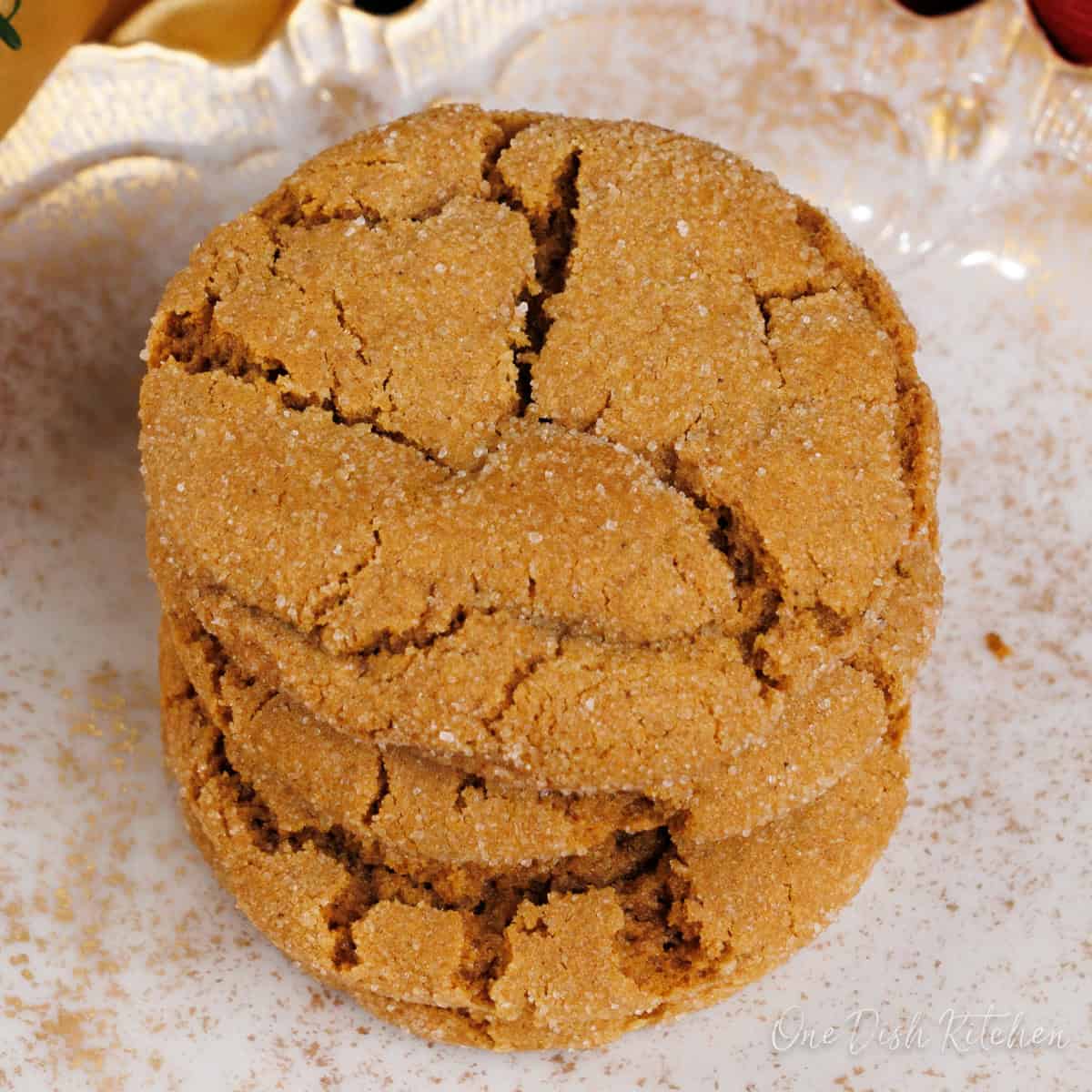
Expert Tips
- Read the Full Recipe: Check the recipe, ingredient notes, and FAQs before starting. Many common questions are already answered.
- Measure Flour Correctly: Spoon flour into a dry measuring cup, then level it with a knife. Don’t scoop directly from the bag, it packs in too much flour.
- Softening Butter Tip: Let butter sit at room temperature for about 30 minutes.
- Line the Baking Sheet: Use parchment paper or a silicone mat. Don’t grease the pan, greased sheets can cause cookies to spread too much.
Frequently Asked Questions
Chilling helps the cookies hold their shape and enhances the flavor.
Cookies may spread too much if the dough isn’t chilled, the butter is too soft, or the baking sheet is greased instead of lined with parchment or a silicone mat. Another common issue is using old baking soda, which may lose its effectiveness over time. Always check the freshness of your baking soda by adding a small amount to vinegar to a cup of hot water – if it doesn’t fizz, it’s time to replace it.
Molasses cookies have a stronger molasses flavor and a softer, chewier texture, thanks to the higher amount of molasses and cinnamon. Ginger cookies use less molasses and are typically crispier with a stronger ginger flavor.
It’s best to use 2 egg yolks instead of a whole egg when doubling this recipe. Using a whole egg makes the cookies flatter, while 2 yolks help the cookies rise and create a soft, chewy texture. The extra yolk provides the protein needed for the structure of the cookies.
Make Ahead and Storage Tips
- Cookie Dough: Make the dough ahead and refrigerate for up to 2 days. Before baking, let it sit at room temperature for 30 minutes, then roll in sugar and bake.
- Baked Cookies: Freeze baked cookies for up to 3 months. Thaw overnight in the refrigerator, then bring to room temperature before serving, if desired.
- Unbaked Cookie Dough Balls: Freeze dough balls (without sugar coating) for up to 3 months. When ready to bake, roll them in sugar and bake as directed.
- Storing Baked Cookies: Store baked cookies in an airtight container at room temperature for up to 1 week.
Ways To Use Leftover Ingredients
If you have any ingredients leftover from this recipe, check out our Leftover Ingredients Recipe Finder or you might like to consider using them in any of these single serving and small batch recipes:
If you’ve tried this molasses cookie recipe or any recipe on One Dish Kitchen please let me know how you liked it by rating the recipe and telling me about it in the comment section below.
Also, if you take a picture please tag us on Instagram (@onedishkitchen) we’d love to see it!
Small Batch Molasses Cookies
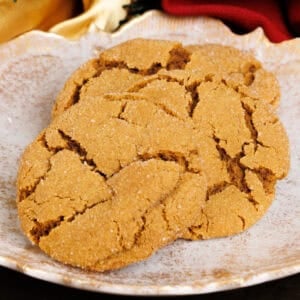
Ingredients
- 3 tablespoons salted butter -softened to room temperature
- ¼ cup brown sugar -packed
- 1 large egg yolk
- 2 ½ tablespoons molasses
- ½ teaspoon vanilla extract
- ¾ cup all-purpose flour
- ½ teaspoon ground ginger
- ½ teaspoon ground cinnamon
- ½ teaspoon baking soda
- ⅛ teaspoon ground cloves
- 2-3 tablespoons granulated sugar, for rolling
Instructions
- Preheat the oven to 350°F (177°C). Line a baking sheet with parchment paper or a silicone baking mat.
- In a medium bowl, beat the softened butter and brown sugar with an electric mixer on medium speed for about 1 minute, until well combined.
- Mix in the egg yolk, molasses, and vanilla until fully blended.
- In a separate small bowl, whisk together the flour, ginger, cinnamon, baking soda, and cloves.
- Gradually add the dry ingredients to the wet mixture, beating on low speed until a dough forms.
- Wrap the dough in plastic wrap and refrigerate for 20 minutes.
- Roll the chilled dough into 1-inch balls. Roll each ball in granulated sugar and place on the baking sheet, leaving 2 to 3 inches of space between each.
- Bake for 8–10 minutes, until the edges are set. Let the cookies cool on the baking sheet for 5 minutes, then transfer to a wire rack to cool completely.
Notes
- Read the Full Recipe: Check the recipe, ingredient notes, and FAQs before starting. Many common questions are already answered.
- Measure Flour Correctly: Spoon flour into a dry measuring cup, then level it with a knife. Don’t scoop directly from the bag, it packs in too much flour.
- Softening Butter Tip: Let butter sit at room temperature for about 30 minutes.
- Line the Baking Sheet: Use parchment paper or a silicone mat. Don’t grease the pan, greased sheets can cause cookies to spread too much.
Nutrition
The information shown is an estimate provided by an online nutrition calculator. It should not be considered a substitute for a professional nutritionist’s advice.

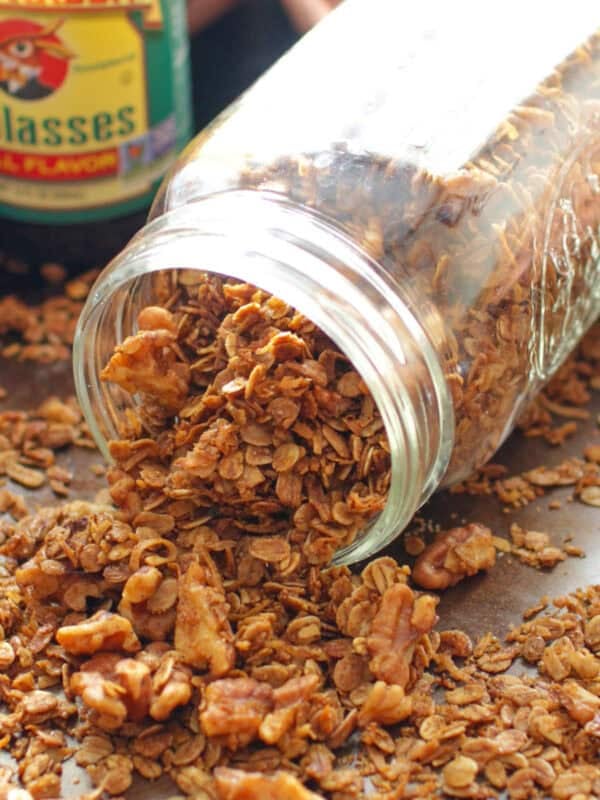
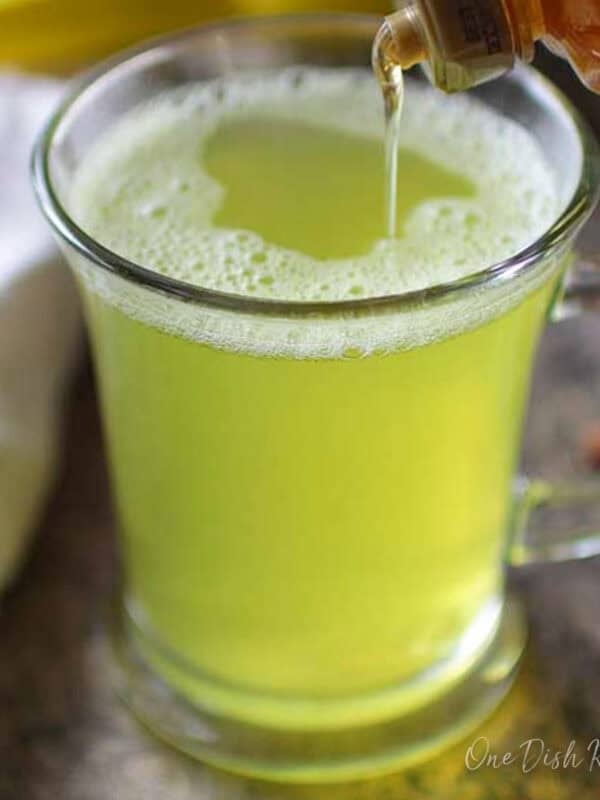



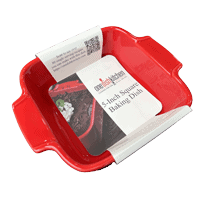








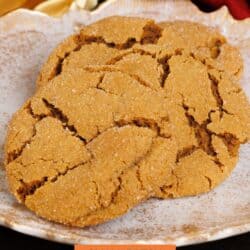
so yummy. The only change I made was
I didn’t let them cool completely 😋
Approximately how many cookies will this recipe make? I’ve looked twice now and didn’t see that information. I was thinking of maybe adding chopped dates and walnuts.
6 cookies.
The BEST Molasses Cookies!!
These are perfect for a little snack with a cuppa! I used pomegranate molasses because that’s what I had. The flavour was quite mild, reminiscent of gingerbread, especially in texture (the way I make gingerbread anyway). I kept the four biggest ones & used them as the bases for your small batch cheesecake.
Perfect! Got some afternoon tea & dessert out of one little batch. Will definitely make these again. I didn’t change anything other than molasses. If anything I could eat these sweeter.
I’m so happy you enjoyed the cookies and what a wonderful idea to use some as a crust for the cheesecake – thank you so much for your feedback.
Delicious!!!
Tried these cookies and turned out good. One question do you flatten the cookies before baking or do you roll into the one inch balls and bake in the ball shape. I flattened the balls, the cookies turned out fine but were a bit thin.
Hi Kevin, I’m so glad you enjoyed the cookies. Don’t flatten them. Just roll them into a ball and bake.
I made these tonight and they are phenomenal!! They were so easy to make and assemble. I accidentally put too much clove in but it still tasted delicious. I will definitely be making again!!
I made these last night doubling the recipe expecting to get 12 cookies and it made 24 delicious cookies. No complaints from me!
Terrific recipe.